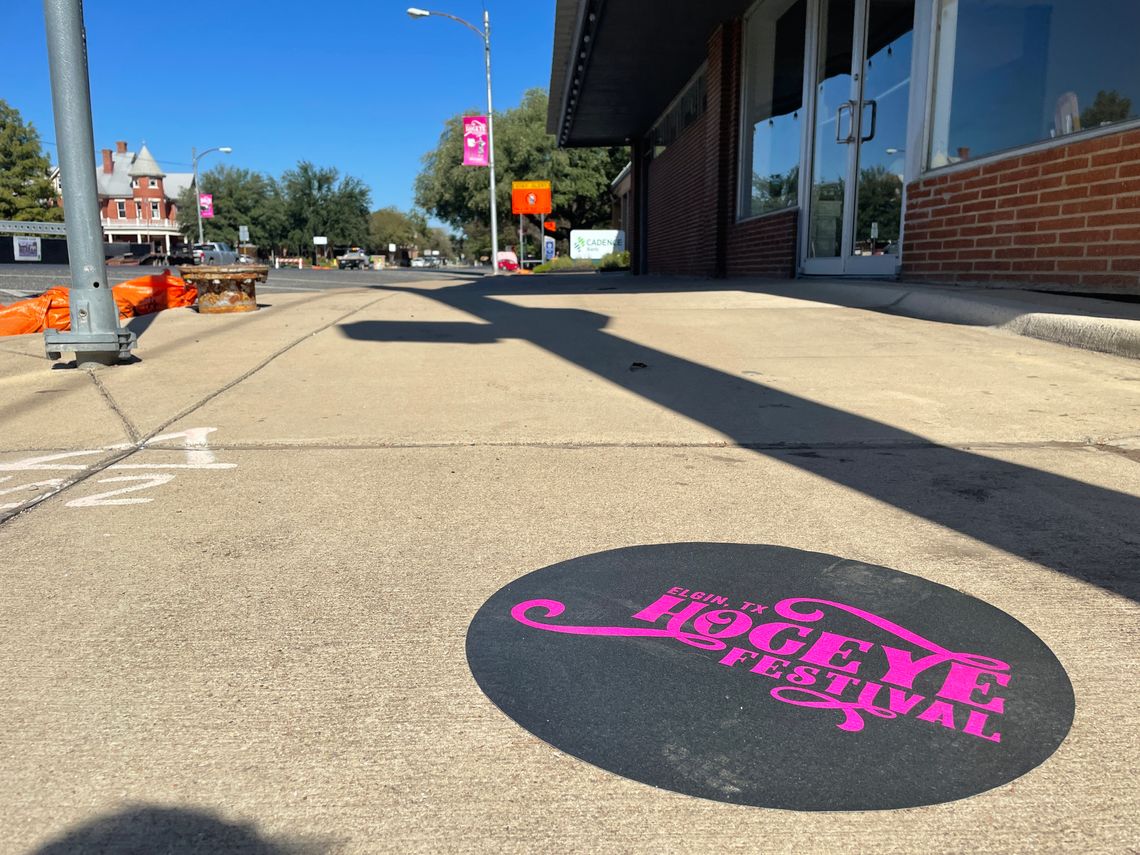Someone asked if Hogeye still exists. The answer is that there are two Hogeyes in Texas.
Hogeye in Bastrop County exists about as much as Post Oak Island and other small pre-railroad communities exist. The businesses moved to Elgin after the H&TC Railroad formed the new town in 1872.
The community located 2.5 miles south of Elgin on FM 1704 was first known as Young’s Settlement and then as Perryville. Its nickname of “Hogeye” has been kept alive by writers, such as Nell Davis, and by the popular annual Hogeye street festival in Elgin.
The nickname came about during the time of John and Sarah Elizabeth Standifer Litton’s dances at their stage-stop home because the fiddler could play only one tune, “Hogeye,” over and over.
The other Hogeye – it’s real name – is in Hunt County. It is said that the name refers to the All-Seeing Eye or Eye of Providence in Masonry when the lodge there was founded. To some local people, the eye – which since 1934 appears on the U.S. dollar – looked like a hog’s eye.
Elizabeth James Standifer
Elgin’s Hogeye is on the Mexican land grant (Austin’s Little Colony) of an intrepid woman named Elizabeth James who was born in Elbert County, Georgia, in 1794.
Elbert County was 374 square miles of rolling hills in northeast Georgia separated from South Carolina by the Savannah River. Ibrey Jasper Kidd, who settled at Post Oak Island about seven miles straight northeast of Elgin, was also born in Elbert County but a generation later.
Elizabeth James married Anderson Standifer, who was born in neighboring Oglethorpe County, Georgia, in 1784. After their marriage in 1809, they moved to Tennessee, where their two oldest sons, James William and William Bailey Standifer, were born. While in Tennessee, Anderson Standifer served in the War of 1812. Their next move was to Union County, Illinois. It was called "American Bottoms" because it was in the floodplain of the Mississippi and prone to flooding. Anderson and a partner, Jacob Littleton, opened a tavern. A third son, Jacob Littleton Standifer, was born in 1818.
Anderson Standifer died in July 1820 when their fourth and youngest child, Sarah Elizabeth, was one month old.
Elizabeth James Standifer sold the property and outfitted a wagon and ox team to return to her home in Georgia. It was at least 500 miles of traveling and camping out in all kinds of weather with three young children and a baby. She was a female bullwhacker. Had she traveled with mules, she would have been called a muleskinner.
Before she started from Illinois, she would have to have new tires on all the wagon wheels because the tires had to last the whole trip. If one fell off the wheel, she would have to stop instantly or else the spokes would be broken. She would have to remove the wheel and build a circular fire the size of the tire to expand it so it would slip back on the wheel. Water would have to be available to cool it so it wouldn't burn the wooden fellas. A felloe was the outer part of the spoke. The oxen had to be newly shod also with special half shoes because of their cleft feet.
The family later traveled by ox-team the 700 miles from Alabama to Texas in 1828. This journey was in a group which included the Michael Young family.
This story will continue next week.
Charlene Hanson Jordan wrote the above narrative as the first of a weekly column. Her newest book, "NOTES & RECOLLECTIONS, Post Oak Island & Elgin, Texas,” is available at the Elgin Depot Museum where exhibits, photographs, and books on local history are also available. The museum is open on Fridays and Saturdays from noon to 4 p.m. with extended hours starting in mid-January. The book may be purchased at the Elgin Courier office, 105 N. Main Street in Elgin with phone number 512-285-3333 during business hours, or from her directly at [email protected] or 512-856-2562.
.png)







